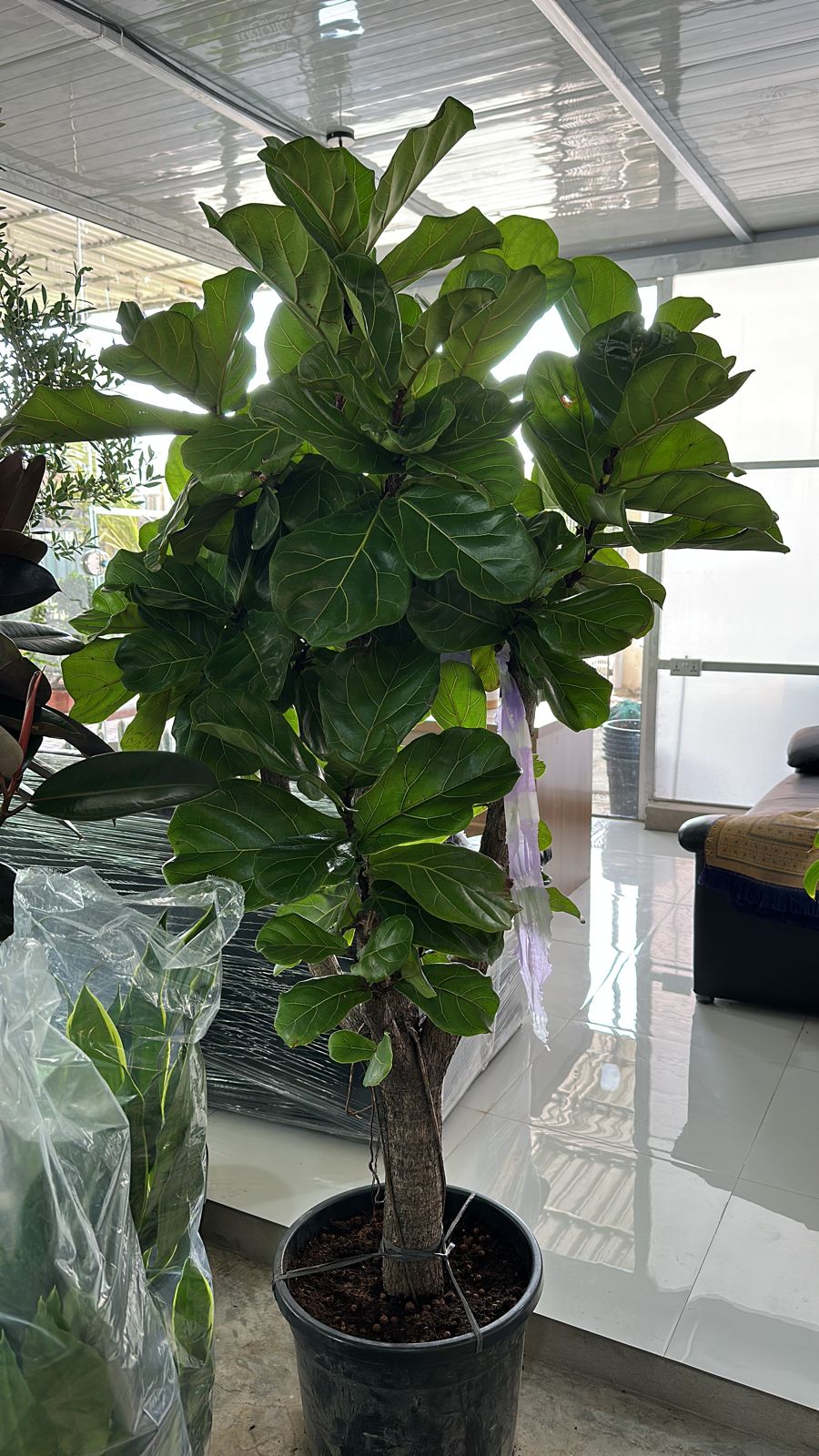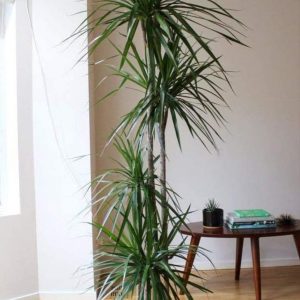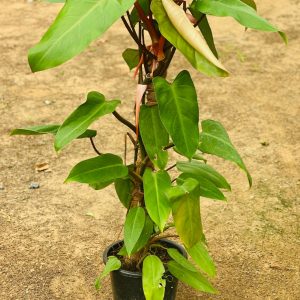Ficus lyrata (Fiddle leaf) 180-200CM
Ficus lyrata (Fiddle leaf), commonly known as the Fiddle Leaf Fig, is a popular indoor plant cherished for its large, glossy leaves and striking appearance. With its unique fiddle-shaped leaves, this plant adds a touch of elegance and a tropical vibe to any space. Here is a detailed description of Ficus lyrata along with care tips to help you cultivate and maintain its health and beauty:
Ficus lyrata (Fiddle leaf) Appearance:
Ficus lyrata features large, leathery leaves that resemble the shape of a fiddle or violin, hence its common name. The leaves are dark green and have prominent veining, giving them a distinctive and attractive look. The plant can grow up to several feet tall, creating an impressive and eye-catching presence.
Ficus lyrata (Fiddle leaf) Light:
Place your Ficus lyrata in bright, indirect light. It thrives in well-lit areas but should be protected from direct sunlight, as it can scorch the leaves. If possible, position it near a window with filtered light. Rotate the plant occasionally to ensure even growth.
Ficus lyrata (Fiddle leaf) Temperature:
Ficus lyrata prefers average to warm room temperatures between 65°F to 75°F (18°C to 24°C). It is sensitive to cold drafts and temperature fluctuations, so avoid placing it near doors, windows, or air conditioning units that may cause sudden temperature changes.
Ficus lyrata (Fiddle leaf) Watering:
Water your Ficus lyrata when the top inch (2.5 cm) of soil feels dry. Provide a thorough watering, allowing water to penetrate the root ball and draining any excess water from the pot’s saucer. Avoid overwatering or allowing the plant to sit in standing water, as it can lead to root rot. Adjust the watering frequency based on the plant’s needs and the environmental conditions.
Ficus lyrata (Fiddle leaf) Humidity:
Ficus lyrata appreciates moderate to high humidity levels. If the air is dry, increase humidity by misting the leaves regularly or placing a humidifier nearby. Grouping plants together can also create a more humid microclimate. Avoid placing the plant near heating or cooling vents, which can reduce humidity.
Soil:
Use a well-draining potting mix specifically formulated for indoor plants. A mixture of peat moss, perlite, and regular potting soil works well. Ensure the pot has drainage holes to prevent waterlogging and allow excess water to escape.
Fertilization:
Feed your Ficus lyrata with a balanced, water-soluble houseplant fertilizer diluted to half the recommended strength. Apply the fertilizer every two to four weeks during the growing season (spring and summer) to support healthy growth. Reduce or stop fertilization during the dormant period (winter).
Pruning:
Regular pruning helps maintain the shape and size of your Ficus lyrata. Trim back any leggy or overgrown branches to encourage a bushier growth habit. Remove any yellow or damaged leaves to promote the overall appearance of the plant. Clean your pruning tools before and after use to prevent the spread of diseases.
Support:
As Ficus lyrata grows, it may require support for its large leaves and heavy branches. Use stakes or a moss pole to provide stability and prevent the plant from leaning or toppling over.
Pests:
Keep an eye out for common houseplant pests such as mealybugs, scale insects, and spider mites. Regularly inspect the leaves, stems, and undersides for signs of infestation. If pests are present, treat them with an appropriate insecticidal soap or horticultural oil according to the product instructions.
With proper care and attention, your Ficus lyrata (Fiddle Leaf Fig) will thrive and become a stunning focal point, enhancing the beauty of your indoor space with its lush foliage and unique leaf shape.






Reviews
There are no reviews yet.